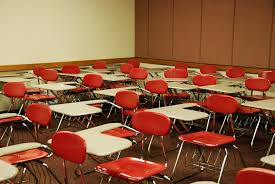Sixth Straight Year of Decline in Students for MN State Schools
 Enrollment at Minnesota State colleges and universities continues to fall, along with revenue from tuition, resulting in more schools than not running in the red again in the 2016-17 school year. It’s the sixth consecutive year for declining overall enrollment at the 37 Minnesota State post-secondary institutions.
Enrollment at Minnesota State colleges and universities continues to fall, along with revenue from tuition, resulting in more schools than not running in the red again in the 2016-17 school year. It’s the sixth consecutive year for declining overall enrollment at the 37 Minnesota State post-secondary institutions.
Some of the factors at work appear to be a stronger economy with more job opportunities and changing demographics that have led to fewer college-age young people. A desire to avoid crushing debt before entering the workforce and the reality that just 22 percent of jobs in Minnesota require a four-year college degree could also figure into the results.
The St. Paul Pioneer Press recently published a sort of report card on the trend line.
Full-year equivalent enrollment totaled 131,640 last year, down 17 percent from 2010-11. Another 1.9 percent decline is expected this year.
Twenty-two schools operated the 2016-17 school year at a loss while 15 made money.
On the positive side, schools appear to be responding to the decline in a business-like way, getting out in front of deficits, cutting staff and classes in some cases and and balancing budgets.
“Campuses are getting better at forecasting their enrollment — or they’re getting less optimistic,” chief financial officer Laura King said.
Two years ago, 19 of 37 schools were under extra scrutiny by the system office for failing financial stress tests. This year, that number is nine.
The nine are four universities — Metropolitan State, St. Cloud State, Southwest Minnesota State and Winona State; and five colleges — Mesabi Range, Riverland, Hibbing, Pine and MSC Southeast.
It’s notable that Minnesota State universities and colleges without technical campuses appear to account for all but two of the nine schools under scrutiny. Minnesota State keeps a close eye on the financials of those schools, whose bean counters spend lots of quality time with the folks in green eyeshades.
MSU Moorhead President Anne Blackhurst said it’s no fun being on the watch list.
“I didn’t like it. It was not always pleasant to have regular meetings with (King) and her staff,” she told trustees.
Still, Blackhurst credited King with helping her school. Moorhead now flags just one of the system’s five indicators, down from four when it was under extra scrutiny.

Plenty of other options exist for young people who may not be drawn to getting a four-year college degree. The Great Jobs Program at American Experiment exists to educate young people and their parents about well-paying career opportunities that don’t require a traditional degree and help employers bridge the “skills gap” with a skilled workforce in demand in our state.